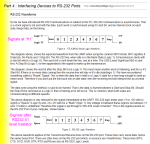wintermute3
New member
Bringing up new hardware which uses the subject display. Display lights up fine, and I have scoped the serial interface and voltage levels hitting the display input look good. We converted an existing, working USB-based system, so I know that we are sending valid packets and crc's. But the display will not respond. Can you confirm that we are using the right polarity and such? Sending 115200n8 with 5v == 1 and 0v == 0, idle mark level is 5v == 1, start bit is 0v == 0, 8 data bits sent LSB first, MSB last, stop bit 5v == 1, then back to idle mark 5v == 1. Data is positive true (1 bits are 5v, 0 bits are 0v).
Does all this sound correct? Thanks!
- Michael
Does all this sound correct? Thanks!
- Michael
Looking for additional LCD resources? Check out our LCD blog for the latest developments in LCD technology.

